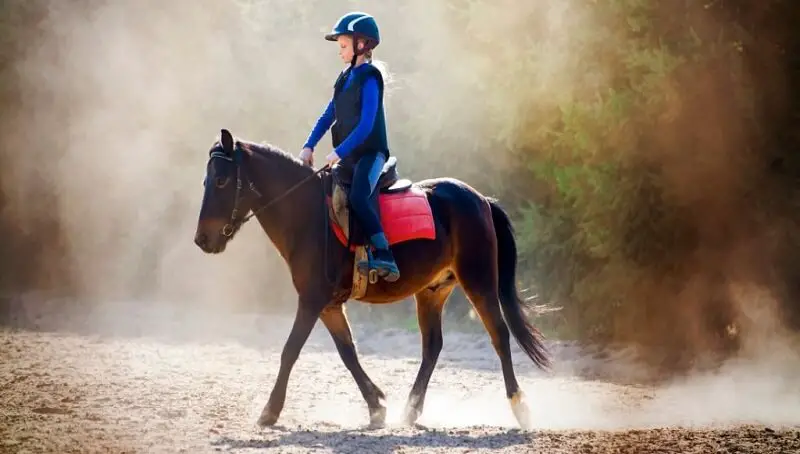This is one of the most common questions people ask when wanting to ride a horse: Am I too big for this horse? The size of the horse should be proportional to the rider, but the weight itself is not the only factor to consider.
Your height and riding skills come into play when you want to make the effort of the horse easier and the rider feel safe and comfortable. So, in some cases, a smaller horse will do very well with a heavier rider.
Instead, a smaller but inexperienced rider might be more difficult for a larger horse, causing back pain and problems with the solidity of the horse’s legs. When choosing the size of the horse, it is important to consider a number of factors.
Ability to ride
You might also like my articles about:
The riding ability is an important element that influences how easily a horse can carry a rider. This can be almost as important as the size of the rider.
A rider who is a skilled equestrian, balanced in the saddle, and who has a good seat will be easier to be carried by the horse, than a rider who has no experience and is inclined in the saddle.
If you have had the experience of carrying both a child who is awake and a sleeping one, you will know how a horse feels when carrying a self-holding rider, compared to a rider who is unstable and unbalanced.
It won’t take long for a horse that carries an unbalanced rider to develop back and solidity problems. They can also lead to behavioral problems.
Improving your riding skills will make your journey more comfortable and safer. It will also allow the horse to be more comfortable, well-balanced, and resist longer.
Make an effort to improve your riding skills by taking lessons and paying attention to equitation when riding.
Consider the weight
 When people wonder if they are too heavy for a horse, their main concern is their own weight. A study published in the Journal of Veterinary behavior suggests that the rider should weigh less than 15 percent of the horse’s body weight.
When people wonder if they are too heavy for a horse, their main concern is their own weight. A study published in the Journal of Veterinary behavior suggests that the rider should weigh less than 15 percent of the horse’s body weight.
There is still a debate about this percentage, but the general rule is that a horse should carry between 15 to 20 percent of their own weight.
Do not forget that this weight includes the saddle and other riding equipment, in addition to the rider. There is no such thing as an overweight horse that can necessarily carry a heavier rider. The right proportion should be done with the ideal weight of the horse.
The age of the horse
When a horse is very young, the joints and bones are developing. When a horse reaches a mature age, it will probably begin to become arthritic. Very young or very old horses should carry less weight.
The overall workload of young horses that are growing and older horses that may have common health problems must be smaller. This refers to the weight of the rider, along with the time and intensity of any work task.
Consider the height
Height is another factor that affects the safety of a rider in the saddle. If you are tall, you may feel very heavy on a shorter horse with small bones.
A solid horse, such as an Icelandic horse or a Fjord, might be more comfortable, even if it is short compared to many other breeds, such as Arabs and pure English breeds. Anything that makes you unbalanced will make you harder for a horse.
Selecting the right horse and equipment
When selecting a horse, try several different sizes. If you are on the heavier side, consider a breed as an American quarter Horse type or a traction horse. If you are slender, then it could be ideal for you to go for an Arab or a pure breed.
If you have your eye on something like an Arab, look for a horse with a thicker bone. The bone is measured in the middle of the canon on the front leg. The larger the circumference, the more resistant the horse is. In Arabs, a bone of 30 cm is considered quite robust.
It is also important to make sure you have the right size equipment and saddle. The saddle is essential to distribute your weight correctly on the horse, maintaining balance and ensuring that the horse will not experience pain. With the right size, both your horse and you will be comfortable and less stressed during riding.
Final words!
In conclusion, you should take care not to put too much tension on a horse when the ratio of its weight to that of the rider exceeds 20%. Besides weight, the main thing is for a rider to be in good physical shape to ride and to have the proper equipment. When the person is overweight, he can compensate for this with good heating and impeccable equitation technique that will allow him to be lighter on the horse.




